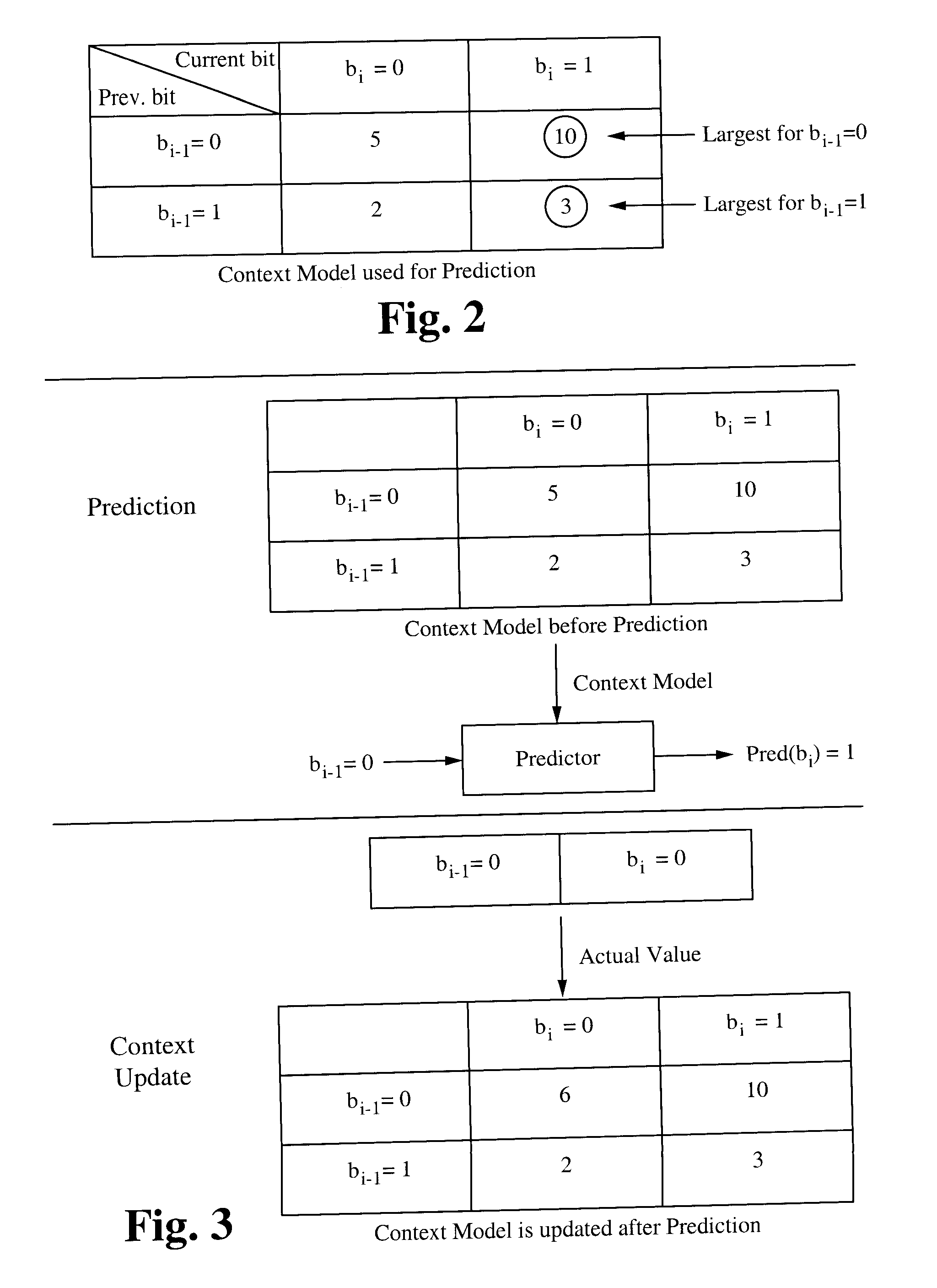Method for improving the performance of embedded graphics coding
a technology of embedded graphics and coding, applied in the field of image processing, can solve the problems of poor coding performance, many “unnatural images, and the type of images that are usually not handled well by conventional image compression algorithms
- Summary
- Abstract
- Description
- Claims
- Application Information
AI Technical Summary
Problems solved by technology
Method used
Image
Examples
Embodiment Construction
[0022]Embedded Graphics Coding (EGC) is able to be used to encode images that have sparse histograms. Thus, it is typically used for, but not limited to, graphical or textual images. EGC provides a lossy to lossless scalability which means the bitstream is able to be stopped in the middle of the bitstream, and the decoder is able to still make a reasonable decoded block based on the bits it has received. If the entire bitstream is sent, the image is able to be losslessly reconstructed. EGC has low complexity and a high coding performance.
[0023]In EGC, an image (such as each frame of a video) is divided into blocks. A bit budget is set for each block. The bit budget is agreed upon by the encoder and decoder. In some embodiments, the bit budget is able to be dynamically changed if the bandwidth is time-varying. The coded bitstream is fully embedded, so that the bit budget is able to be changed arbitrarily. For each block, the pixels are converted into binary representations. Predictio...
PUM
 Login to View More
Login to View More Abstract
Description
Claims
Application Information
 Login to View More
Login to View More - R&D
- Intellectual Property
- Life Sciences
- Materials
- Tech Scout
- Unparalleled Data Quality
- Higher Quality Content
- 60% Fewer Hallucinations
Browse by: Latest US Patents, China's latest patents, Technical Efficacy Thesaurus, Application Domain, Technology Topic, Popular Technical Reports.
© 2025 PatSnap. All rights reserved.Legal|Privacy policy|Modern Slavery Act Transparency Statement|Sitemap|About US| Contact US: help@patsnap.com



